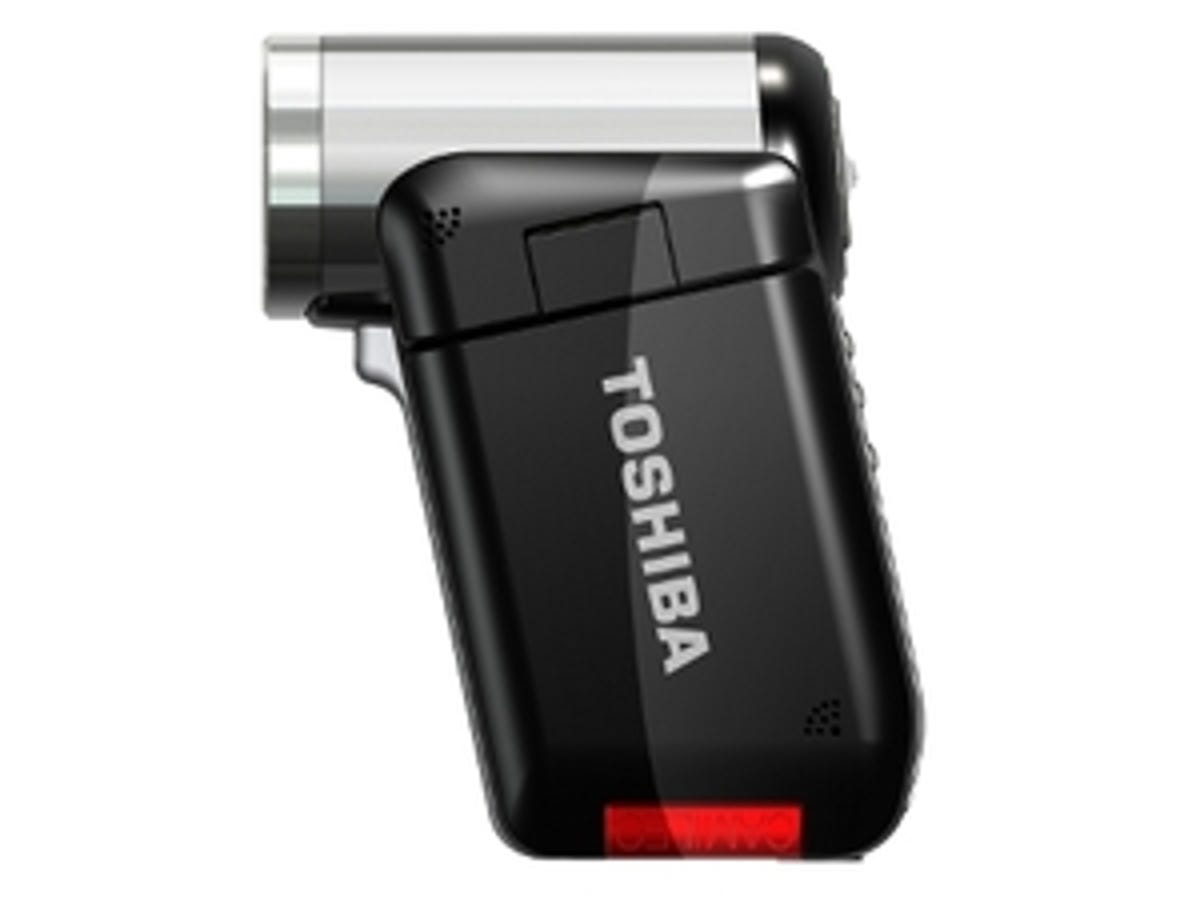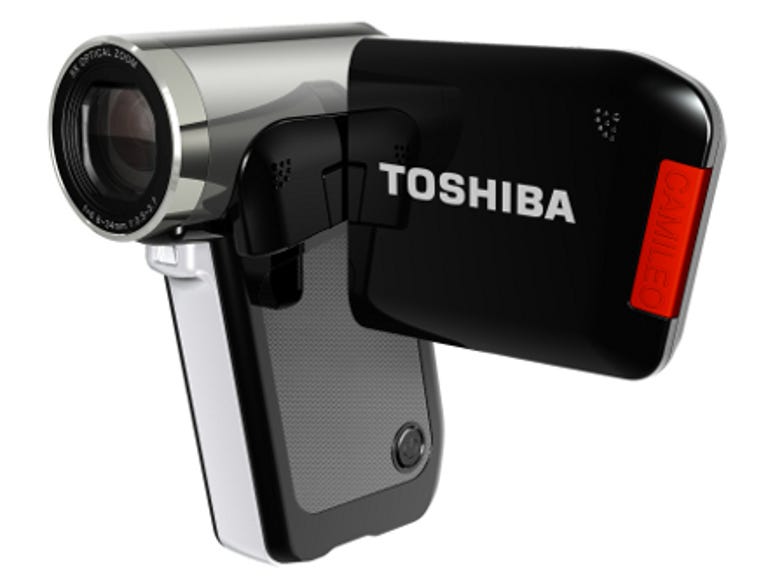 Why You Can Trust CNET
Why You Can Trust CNET Toshiba Camileo P30 review: Toshiba Camileo P30
Easier to use than a toothbrush, the Camileo P30 is a decent pocket camcorder that manages to combine high-definition video with a small, lightweight body and budget price tag. The image quality won't blow your mind, but, for the price, the P30 packs some impressive specs
Video enthusiasts and semi-professionals, look away now: the Toshiba Camileo P30 isn't aimed at you. Easier to use than a toothbrush, it's a cheap and cheerful camcorder with an entry-level asking price of around £150. And, with the promise of 1080p high-definition video, the P30 has got to be pound-per-pixel the best-value camcorder we've seen so far. What's the catch?
The Good
The Bad
The Bottom Line
Xacti doppelgänger
The P30 falls into the relatively new 'pocket camcorder' category, as exemplified by Sanyo's small, lightweight Xacti models or the Flip Video range. Indeed, the P30 even mimics the Xacti pistol-grip design. In fact, it does it so closely that we wouldn't be surprised if Sanyo's chief designer had been moonlighting in the Toshiba labs. In the P30's case, the design certainly makes for jacket-friendly weight and dimensions.
In addition, you don't need the technical know-how of a budding Stanley Kubrick to make movies with the P30. Quite the reverse, in fact -- the P30 is about as 'point and shoot' as they come. There are a handful of menu options to choose from ('resolution', 'stabilisation', 'scene', 'exposure' and 'white balance' are the main settings), but, in reality, operation is as straightforward as inserting an SD card, flipping open the LCD screen and pressing either the 'movie' or 'photo' button.
Impressive specs
Technically speaking, the P30 has the edge on many of its competitors at the budget end of the market. While many other pocket camcorders have a 720p or even standard-definition resolution, Toshiba claims the P30 has a 1080p resolution, plus 8-megapixel stills. On closer inspection, the actual top video resolution turns out to be 1,440x1,080 pixels, rather than the 'true' 1080p resolution of 1,920x1,080 pixels, and the higher photo resolutions can only be achieved with software interpolation (the image sensor's true resolution is only 5 megapixels).

For the asking price, however, these figures are still pretty impressive, and the inclusion of a selection of useful extras, including an on-board video lamp, a mini tripod and an HDMI cable, only serve to make the package even better value.
Cost-cutting compromises
There's no getting away from the fact that the P30 is very much positioned as a budget product. This is evident in the P30's build quality. Once you get up close it looks rather cheap and plasticky. It's also apparent in the zero-frills approach to the menu options. While we'll concede that slimming down the selection of available settings makes for simpler operation, there are several omissions -- such as manual focus or the ability to switch off the digital zoom -- that even the most inexperienced of users might find hard to justify.
The lack of a decent-length optical zoom (you only get 5x zoom) and the poorly placed microphone (on the back of the fold-out LCD screen) are further proof that compromises have been made in order to bring you high-resolution video recording for not very much money. But it's the P30's video and photo quality that really give the game away.
Even in daylight, colours are unrealistic and over-saturated, and there's evidence of a bleed effect around the edges of high-contrast objects. The autofocus is chronically slow, too. And, in video mode, camera motion results in a great deal of blockiness. Compounding that problem is the curious fact that the electronic image stabiliser only works when resolution is lowered to 720p and below. In indoor lighting, a large amount of picture noise is introduced and movement stutters as auto gain and slow shutter speeds try to compensate.
Conclusion
It would be unfair to compare the Toshiba Camileo P30 to camcorders of three times its price, but the truth is that you get what you pay for. If you're happy to compromise on picture and sound quality for the sake of size, ease of use, convenience and cost, then the P30 is definitely one of the better entries in the pocket camcorder category.
Edited by Charles Kloet


